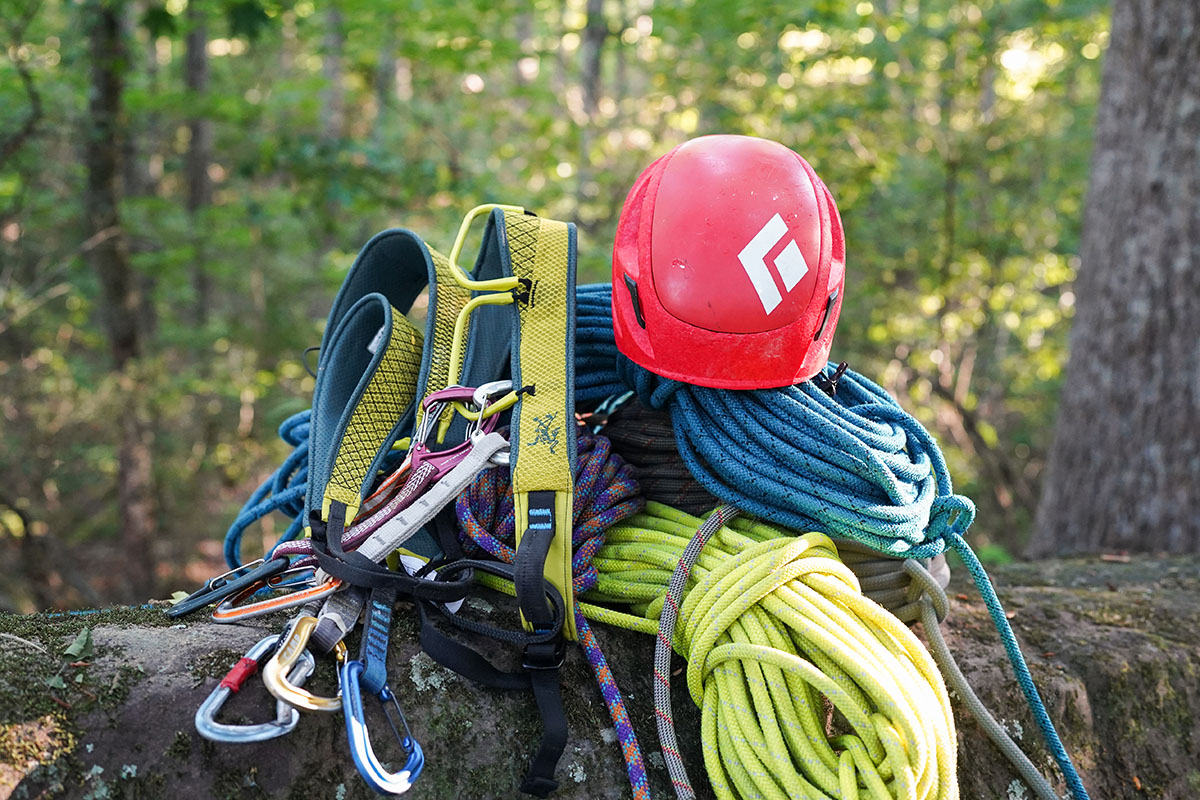
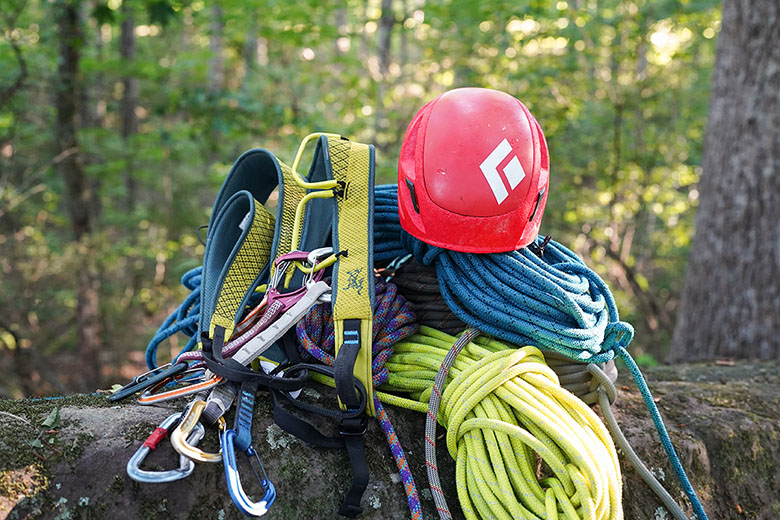
Switchback Travel (Chris Carter)


Switchback Travel (Chris Carter)
Whether you spend your days climbing indoors or scaling multi-hundred-foot monoliths, it’s always helpful to know what you need. Our detailed climbing checklist below covers the critical gear for different styles of climbing: gym climbing, bouldering, sport climbing, and traditional (trad) climbing. We’ve also included a list of personal items and extras that may or may not be worth packing depending on your objectives. For more information on each product category, many of the headings link to our detailed product round-ups, which are the result of years of testing—from try-hard days at our local sport crag to big-wall missions in Yosemite and multi-day ascents of lofty Patagonia peaks. For all of our recommendations in one place, check out our climbing gear reviews.
| Gym Climbing | Bouldering | Sport Climbing | Trad Climbing | Personal Items and Extras |
|---|---|---|---|---|
|
❒ Climbing shoes ❒ Climbing harness ❒ Belay device ❒ Locking carabiner ❒ Chalk bag w/ chalk ❒ Climbing rope (if leading) |
❒ Climbing shoes ❒ Crash pad(s) ❒ Daypack or small climbing pack ❒ Approach shoes ❒ Brush ❒ Chalk bag or bucket w/ chalk |
❒ Climbing shoes ❒ Climbing harness ❒ Climbing helmet ❒ Climbing rope ❒ Climbing backpack ❒ Approach shoes ❒ Belay device ❒ Quickdraws ❒ Rope bag or tarp ❒ Chalk bag w/ chalk ❒ Locking carabiner(s) ❒ Personal anchor system
Optional: ❒ Belay gloves ❒ Belay glasses ❒ Stick clip ❒ Alpine draw(s) ❒ Rigid quickdraw ❒ Anchor building material ❒ Training tools |
❒ Climbing shoes ❒ Climbing harness ❒ Climbing helmet ❒ Climbing rope ❒ Climbing backpack and/or follower pack ❒ Approach shoes ❒ Belay device ❒ Rappel device ❒ Alpine draws ❒ Chalk bag w/ chalk ❒ Cams ❒ Nuts ❒ Nut tool ❒ Personal anchor system ❒ Runners and/or accessory cord ❒ Locking carabiners ❒ Non-locking carabiners ❒ Third hand
Optional: ❒ Crack gloves ❒ Walkie talkies ❒ Shoe keepers ❒ Progress capture device |
❒ Water bottle ❒ Snacks ❒ Climbing tape ❒ Headlamp ❒ First aid kit ❒ Sun protection ❒ Extra layers ❒ Guidebook or topo ❒ Lip balm ❒ Nail clippers ❒ Knife or multi-tool ❒ Massage gun |
Editor's note: The table above provides a brief overview of what you'll need to get outside, but our full PDF version is printable and offers a more comprehensive breakdown of the necessities and nice-to-haves.
See Our Rock Climbing Checklist PDF
If you’re new to climbing, chances are you’re starting out in a gym. We don’t blame you—gyms make it easy to learn the basics in a relatively safe, controlled environment. We’ve also found gym staff to be generally helpful and informative, which can help minimize guesswork as you build a solid foundation. Below, we list the basics you’ll need to start pulling on plastic. Note: Since many experienced climbers are already familiar with what they’ll need for the gym, our product selections have more of a beginner focus, but our gear round-ups linked below feature options for climbers of all skill levels.
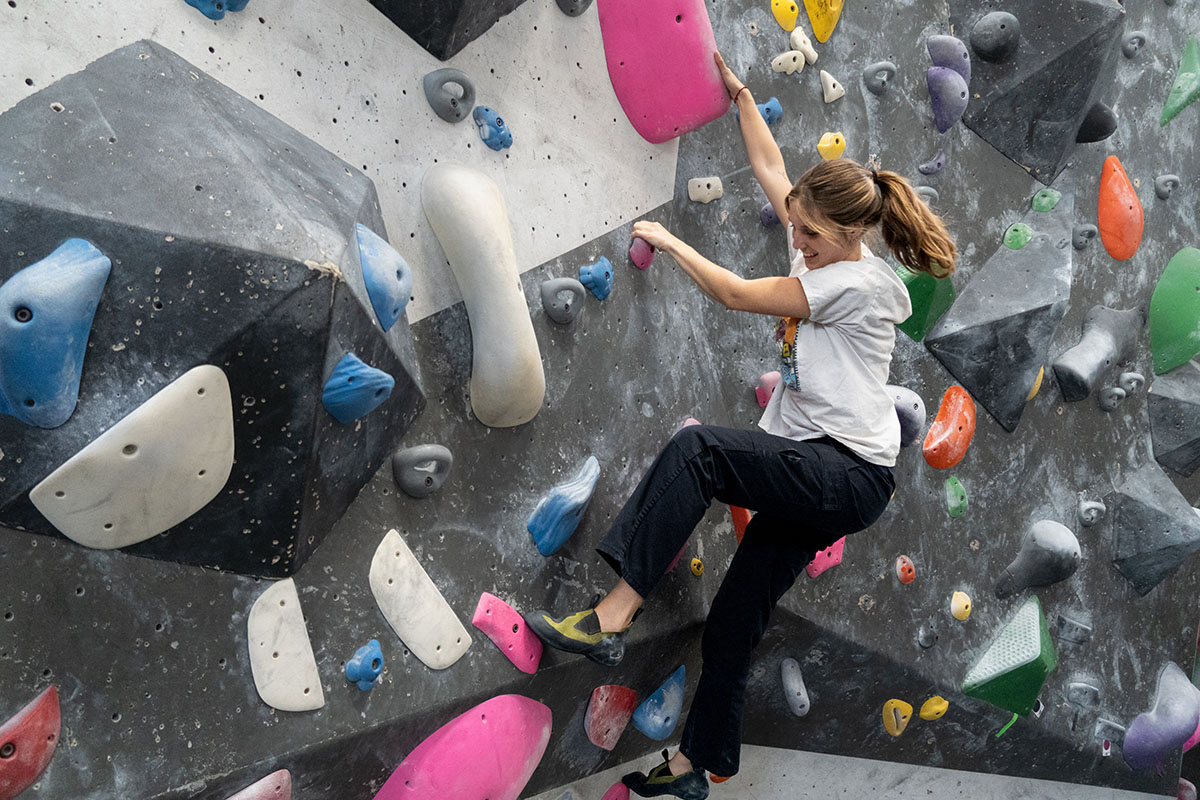
Our top pick: La Sportiva Kubo ($159)
What we like: More capable and versatile than most beginner designs while stacking up favorably in all-day comfort.
What we don’t: Pricier than many true beginner shoes; experienced gym-goers looking for a high-performance design should look elsewhere (we like Scarpa’s Drago).
Our top pick: Black Diamond men's Momentum / women’s Momentum ($65)
What we like: Well made, comes in a range of sizes, and good adjustability at an affordable price.
What we don't: Spending up will get you better quality and comfort.
Our top pick: Black Diamond ATC-XP ($25)
What we like: Cheap, simple, and gets the job done for most casual climbers.
What we don't: If you anticipate sticking with the sport, assisted-braking devices like the Petzl Grigri are much pricier but allow for a more secure and comfortable belay.
Our top pick: Black Diamond RockLock Screwgate ($15)
What we like: Simple but effective screw-gate design that’s nicely sized for most applications.
What we don’t: Prone to scratches; some will prefer the auto-locking Twistlock variation, which costs $8 more.
Our top pick: Prana Chalk Bag with Belt ($35)
What we like: Sleek and practical with a soft exterior, smooth-operating drawcord, and nicely sized opening for chalking up.
What we don't: Doesn't close up as tightly as some designs, which can lead to chalk spilling at the crag or inside your pack (keeping it upright helps).
.jpg)
Our top pick: Sterling Slim Gym 30m ($130)
What we like: Everything many gym climbers need and nothing they don’t.
What we don’t: You’ll need something longer—and ideally thinner—for leading outdoors.
*Editor’s note: Climbing gyms typically have ropes already set up for top-roping, so a separate rope is only needed for lead climbing (some gyms offer community lead ropes for climbers to use during their session, but it’s not the norm).
Bouldering is arguably the easiest way to transition from gym to outdoor climbing. You only need a few pieces of extra gear—although a crash pad is a decidedly bulky and expensive purchase—and it’s nice to have the option to get outside solo when you’re limited on time or can’t find a partner. Bouldering is also a surefire way to get strong quickly, often featuring hard and powerful moves packed into a relatively short sequence.
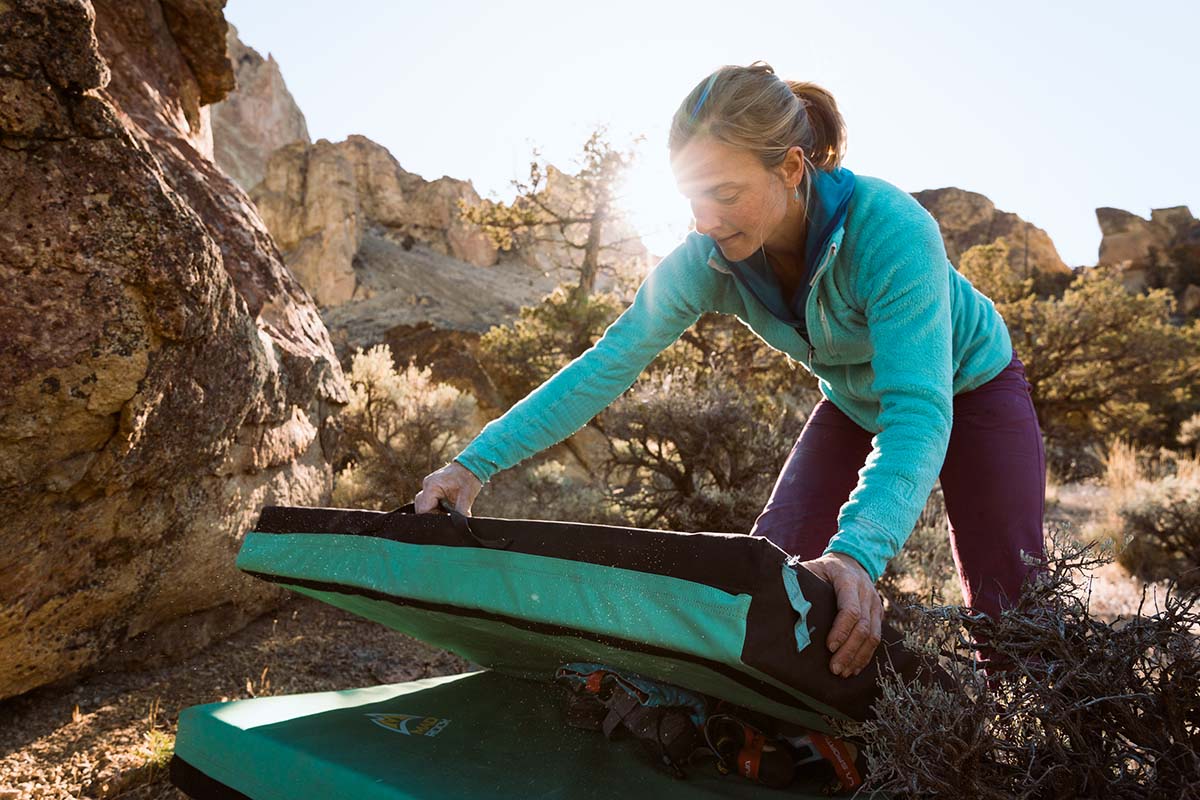
Our top pick: Scarpa Instinct VS ($209)
What we like: Excellent on steep rock; medium-stiff rand offers great edging power.
What we don’t: If you prefer more sensitivity and flex, we’d recommend the softer Instinct VSR or La Sportiva’s Skwama.
Our top pick: Organic Climbing 4” Thick Big Pad ($329)
What we like: Organic foam is considered the best in the game thanks to its balance of cushioning and longevity; design is highly customizable.
What we don't: Relatively heavy and stiff (it takes some time for the foam to break in); poor traction on uneven landing surfaces.
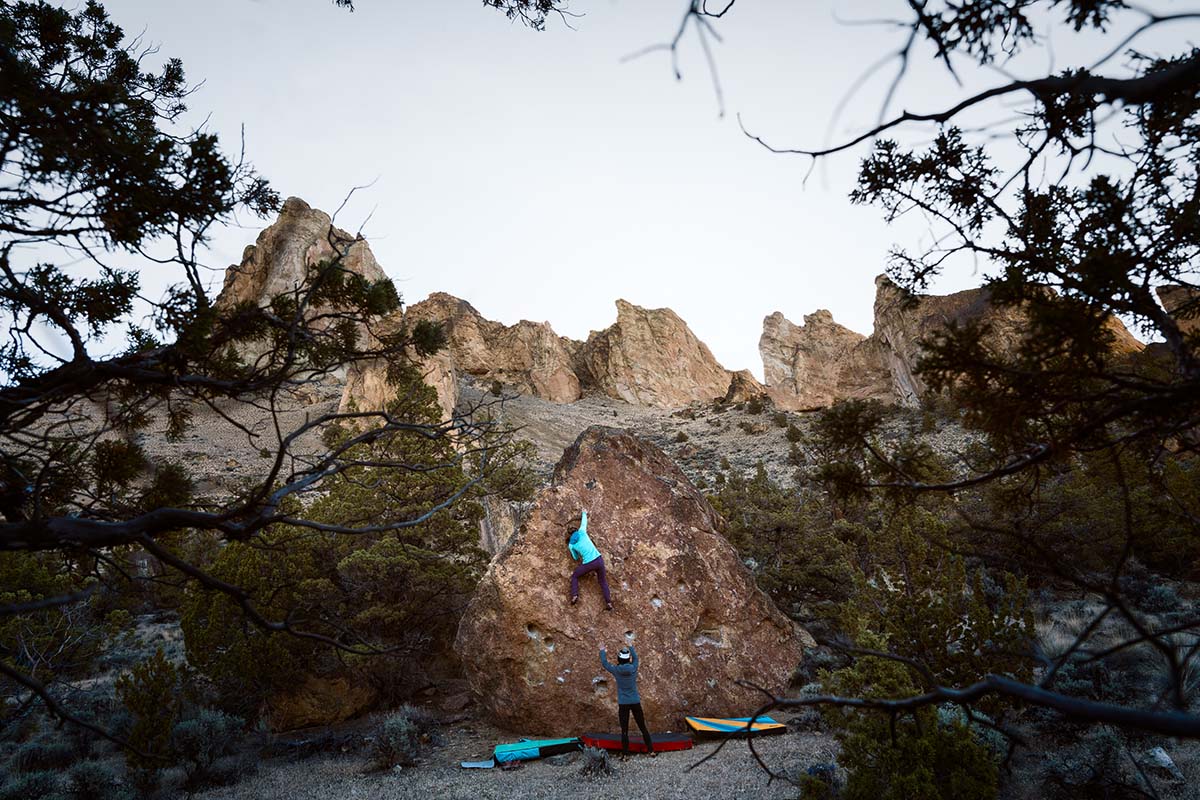
Our top pick: REI Co-op Flash 22 ($60)
What we like: A simple and affordable daypack with enough capacity for all-day bouldering sessions.
What we don’t: Not a standout in comfort or support (it’s best to avoid overloading the pack).
Our top pick: Black Diamond men’s Session 2.0 / women’s Session 2.0 ($140)
What we like: A highly comfortable and easy-wearing shoe that looks good and offers solid technical performance.
What we don’t: Rubber outsole is designed for use on pavement, which translates to great durability but less grip on rock than more performance-oriented designs.
Landing between bouldering and trad climbing in terms of the amount of gear required, sport climbing is one of our favorite disciplines here at Switchback Travel. We love trying hard on real rock with the assurance of bolts to protect any falls, and nothing beats the feeling of working your way up a long and thought-provoking route. In addition to basics like shoes, a harness, a helmet, and a rope (among others), we also like to bring along extras like belay gloves, belay glasses, and a stick clip—none of which are necessary, but they sure do make the experience more comfortable.
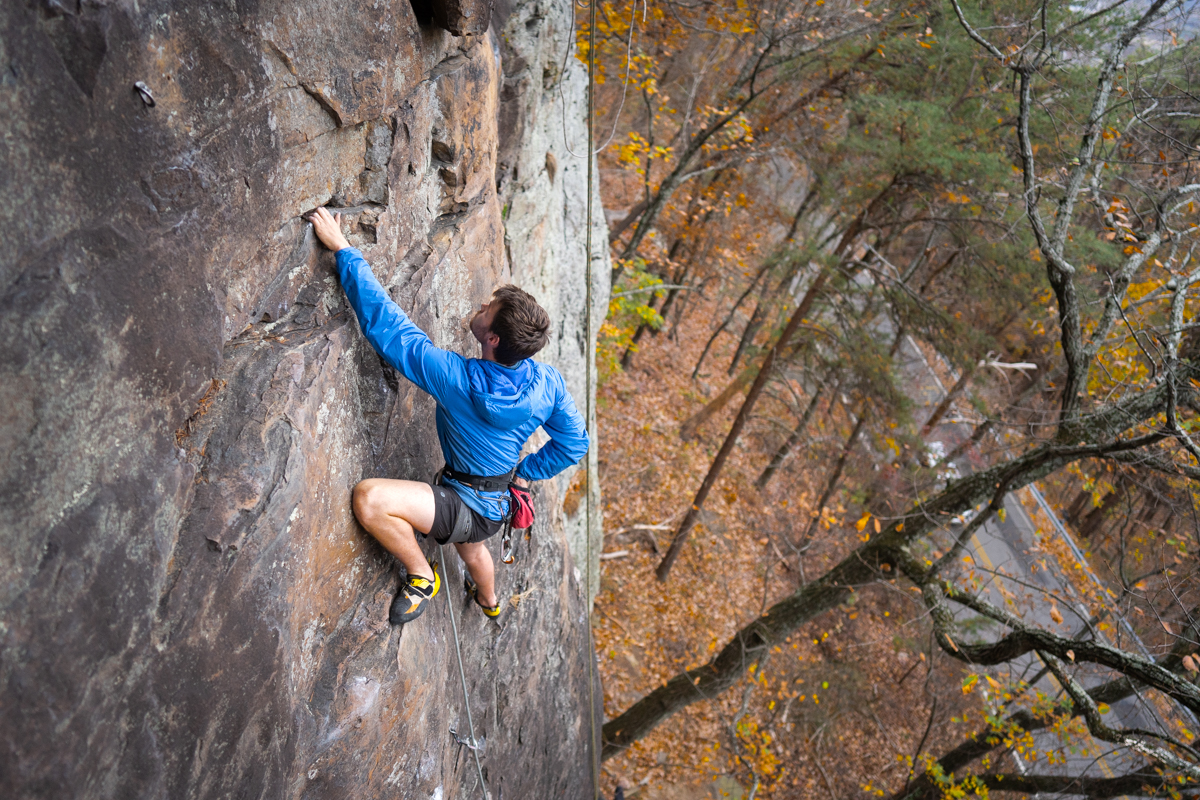
Our top pick: La Sportiva men’s Katana Lace / women’s Katana Lace ($219)
What we like: Does almost everything well, great edging prowess, and comfortable enough to wear for extended periods.
What we don’t: Not particularly soft or aggressive—for that, we turn to La Sportiva’s Testarossa.
Our top pick: Black Diamond men’s Solution / women’s Solution ($80)
What we like: Streamlined and very comfortable with no unnecessary bulk—perfect for sport cragging.
What we don’t: Small gear loops and non-adjustable leg loops (although the latter hasn’t been a dealbreaker for us).
Our top pick: Black Diamond Vision ($90)
What we like: Lightweight, durable, and good-looking—all at a reasonable price point.
What we don't: Doesn’t stand out in any one area, although it puts it all together better than most.
Our top pick: Mammut 9.5 Crag Dry 70m ($290)
What we like: 9.5mm diameter hits a sweet spot between too heavy and too flimsy; smooth handling.
What we don’t: For redpointing hard sport routes, some may prefer a thinner rope like the Eledrid Swift Eco Dry (8.9mm).
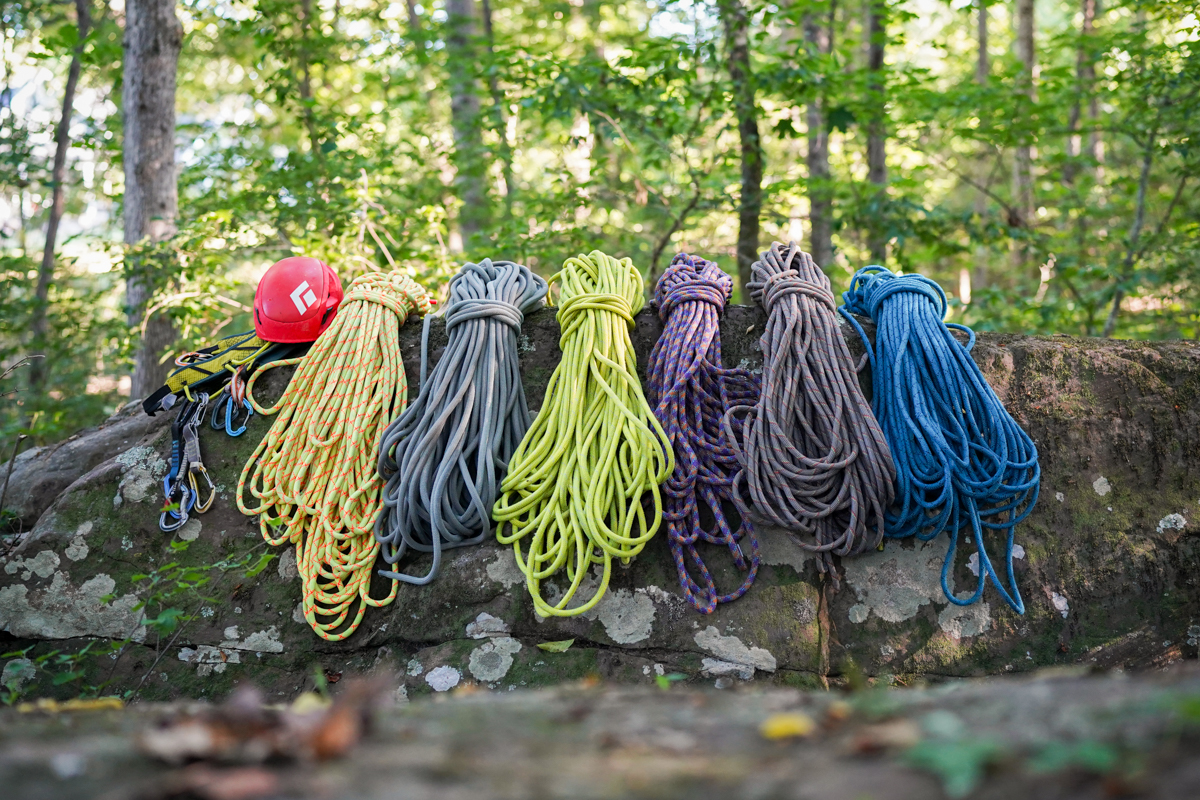
Our top pick: Black Diamond Creek 50 ($220)
What we like: Huge main compartment swallows tons of gear, very quick to load and unload, and beefy materials stand up extremely well to long-term use.
What we don’t: Expensive, heavy, and lacking in versatility—if you’re looking for a pack that you can bring into the mountains on occasion, this isn’t it.
Our top pick: La Sportiva men’s TX4 Evo / women’s TX4 Evo ($169)
What we like: Hardwearing leather upper and well-rounded performance both on the trail and on rock.
What we don’t: Summer-only climbers may want to consider a more breathable option like La Sportiva’s TX3, which features a mesh upper.
Our top pick: Petzl Grigri ($110)
What we like: The gold standard for belaying in sport climbing—it’s intuitive, dependable, and lasts a long time.
What we don’t: There are plenty of cheaper assisted braking devices available, but there’s a reason the Grigri has become so ubiquitous.
Our top pick: Petzl Spirit Express ($26 - $28)
What we like: Smooth and easy to clip, highly durable, and comes in three length options.
What we don’t: Pricey, heavy, and bulky—if you want draws that can pull double duty for trad and alpine climbing, we like Petzl’s Ange Finesse.
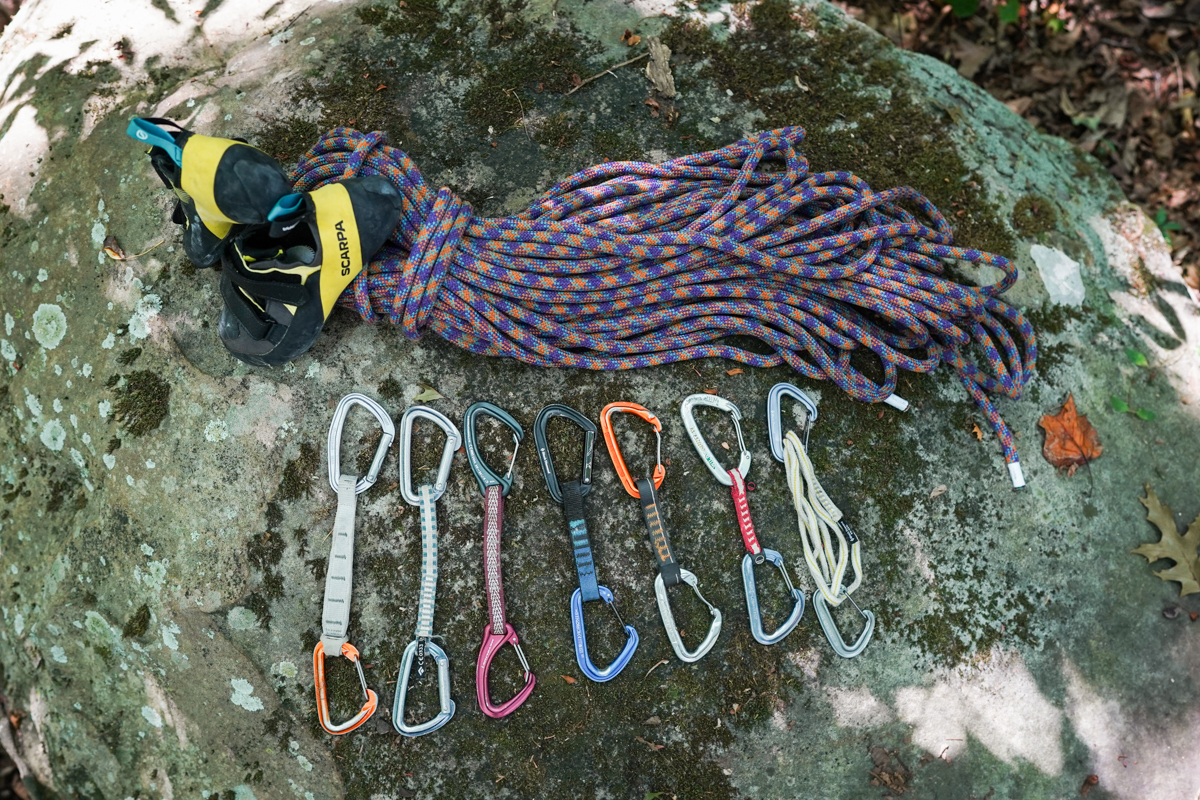
The most gear-intensive discipline of those listed here, trad climbing has a fairly steep barrier to entry. In addition to attaining additional equipment like cams, nuts, and alpine draws, you’ll also need a pack that fits everything on the approach in, a rappel device that can accommodate two strands of rope at once, and anchor-building material like runners and/or accessory cord. Not to mention, most trad climbers receive some sort of training or mentorship before leading routes on gear. We recommend gaining experience by following routes before getting on the sharp end, and always be prepared to deal with objective hazards like inclement weather, rockfall, etc.
.jpg)
Our top pick: La Sportiva TC Pro ($219)
What we like: Widely considered the most versatile trad shoe on the market; great protection for everything from thin foot jams to burly offwidths.
What we don’t: Pricey and relatively specialized (you’ll need another shoe for bouldering, sport climbing, or the gym).
Our top pick: Petzl men’s Adjama / women’s Luna ($95)
What we like: Stellar quality and solid versatility at an affordable price point.
What we don’t: Trad climbers toting a large rack might want additional gear loops.
Our top pick: Petzl Sirocco ($130)
What we like: Ultralight, comfortable and well ventilated for long days on the wall.
What we don’t: You can get better long-term durability for just a couple ounces more (and save some cash in the process) with a design like the Black Diamond Vision.
Our top pick: Mammut 9.5 Crag Dry 70m ($290)
What we like: Great all-around size, performance, and durability; versatile for crossing over between sport and trad climbing.
What we don’t: Alpine climbers will want something thinner and lighter (our favorite is the 8.5mm Beal Opera Dry).
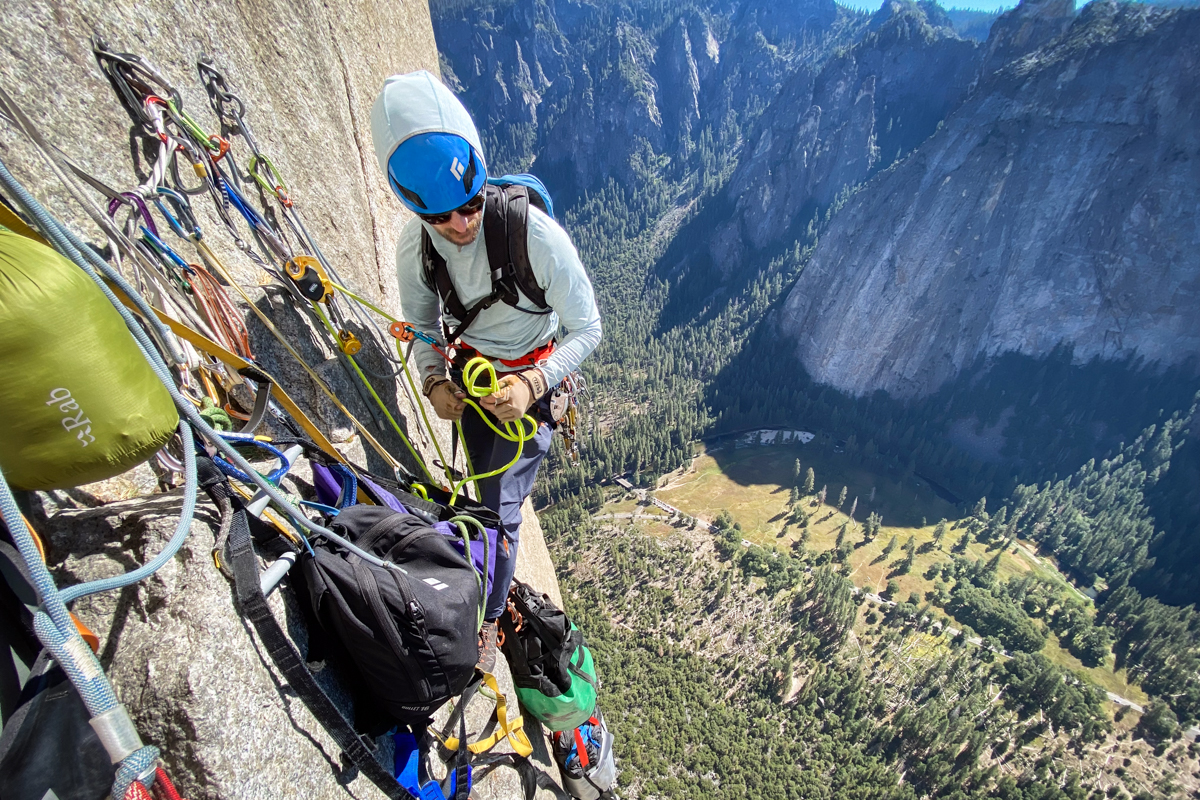
Our top pick: Osprey Mutant 52 ($230)
What we like: Class-leading carrying comfort, nice array of technical features, and do-it-all intentions.
What we don’t: If you prefer to approach with gear already racked on your harness and your rope coiled backpack-style, you can likely get away with a much smaller and cheaper follower pack (or no pack at all).
Our top pick: La Sportiva men’s TX Guide / women’s TX Guide ($179)
What we like: A great option for technical climbing and scrambling; comfortable and speedy on the trail.
What we don’t: For toting up multi-pitch climbs, it’s hard to beat La Sportiva’s feathery (but not all that durable) TX2 Evo.
Our top pick: Petzl Grigri ($110)
What we like: Assisted-braking feature adds a nice dose of safety in the event of a fall; very user-friendly and reliable over the long term.
What we don’t: If you’re looking to bring a single device for belaying and rappelling, you’ll need something with two rope slots (unless you’re doing single-rope rappels).
Our top pick: Black Diamond ATC-Guide ($35)
What we like: A reliable and durable device that allows for double-rope rappels and belaying from above in guide mode.
What we don’t: If you have another device that you prefer to use for belaying from above, you can save $10 with the simpler ATC-XP.
*Editor’s note: We only bring along a tube-style device on multi-pitch climbs. For single-pitch trad routes, the Petzl Grigri is our preferred device.
Our top pick: Trango Phase Alpine ($27)
What we like: Easy to shorten or extend depending on gear placements.
What we don’t: Some climbers will prefer to customize their setup by purchasing carabiners and slings separately.
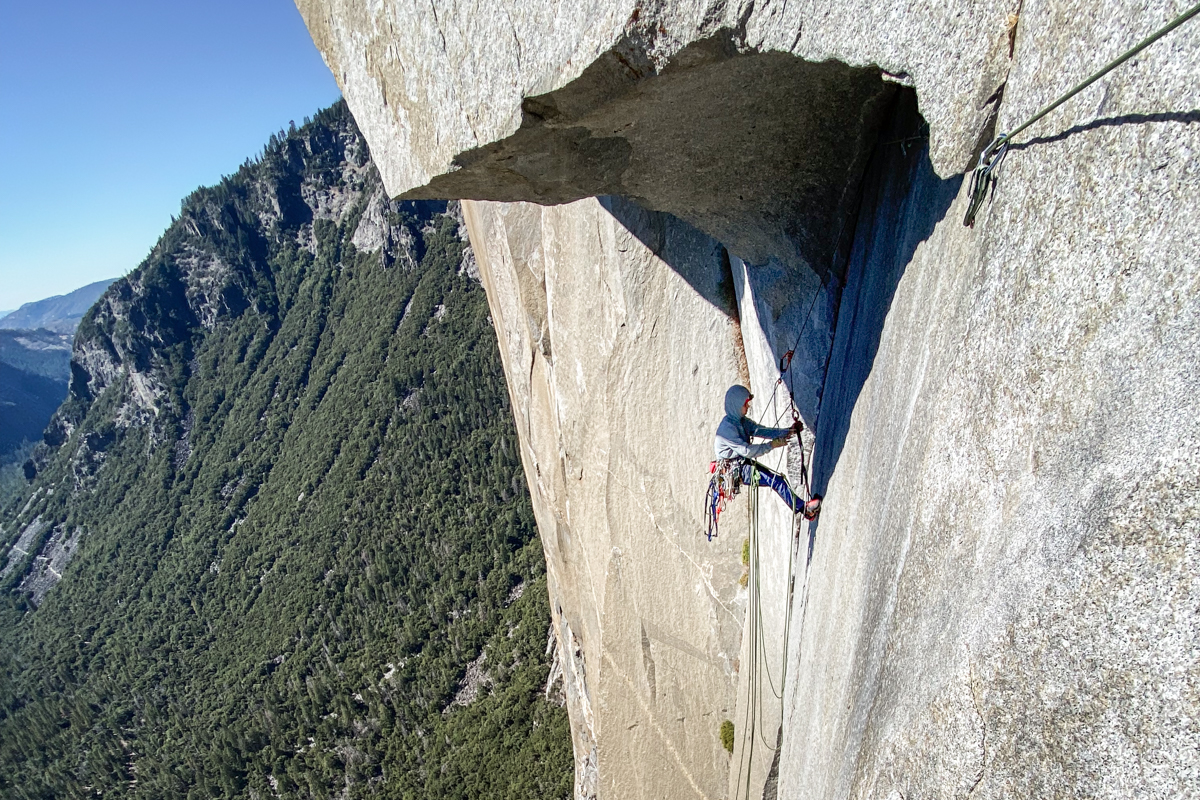
Our list above covers the major essentials for several climbing disciplines, but below we detail more helpful items and tools to bring along with you to the crag (most of these are only relevant to outdoor climbing). And if you’re getting into big-wall objectives (think El Capitan in Yosemite), there’s even more to consider—like a portaledge, dedicated haul bag, and aid gear, for starters.
.jpg)
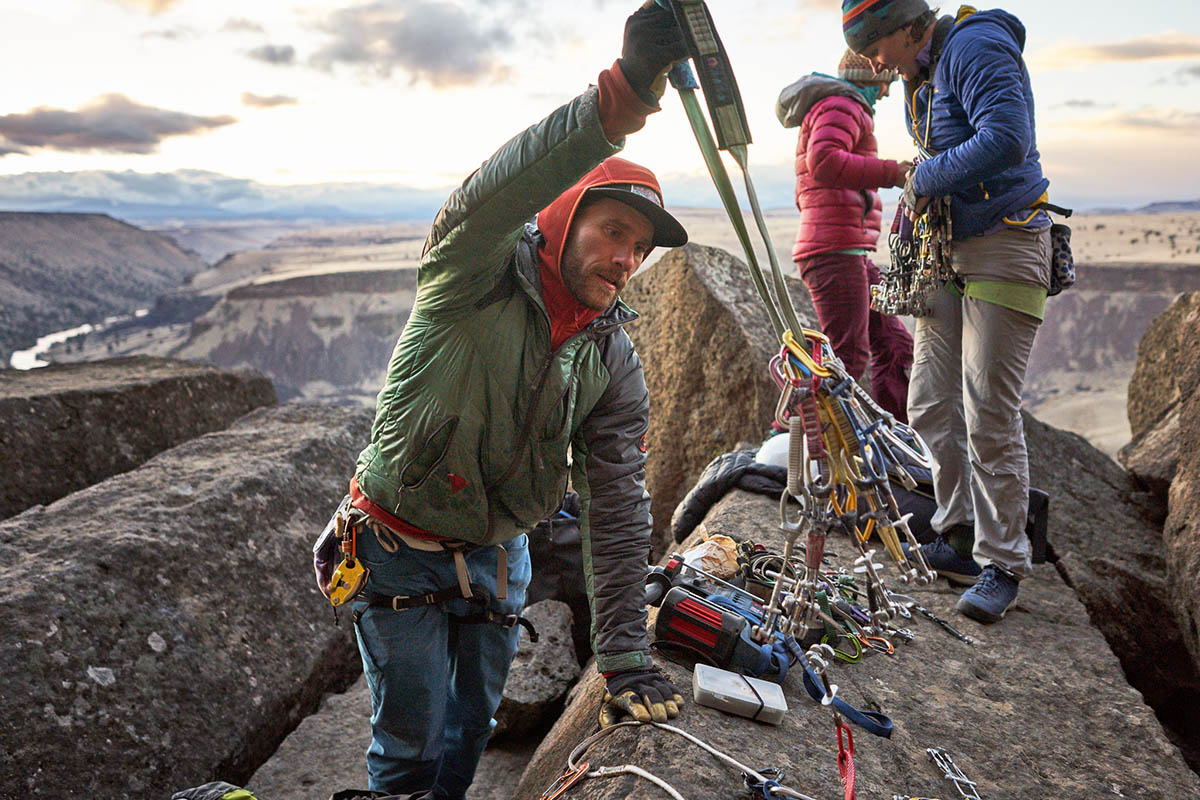
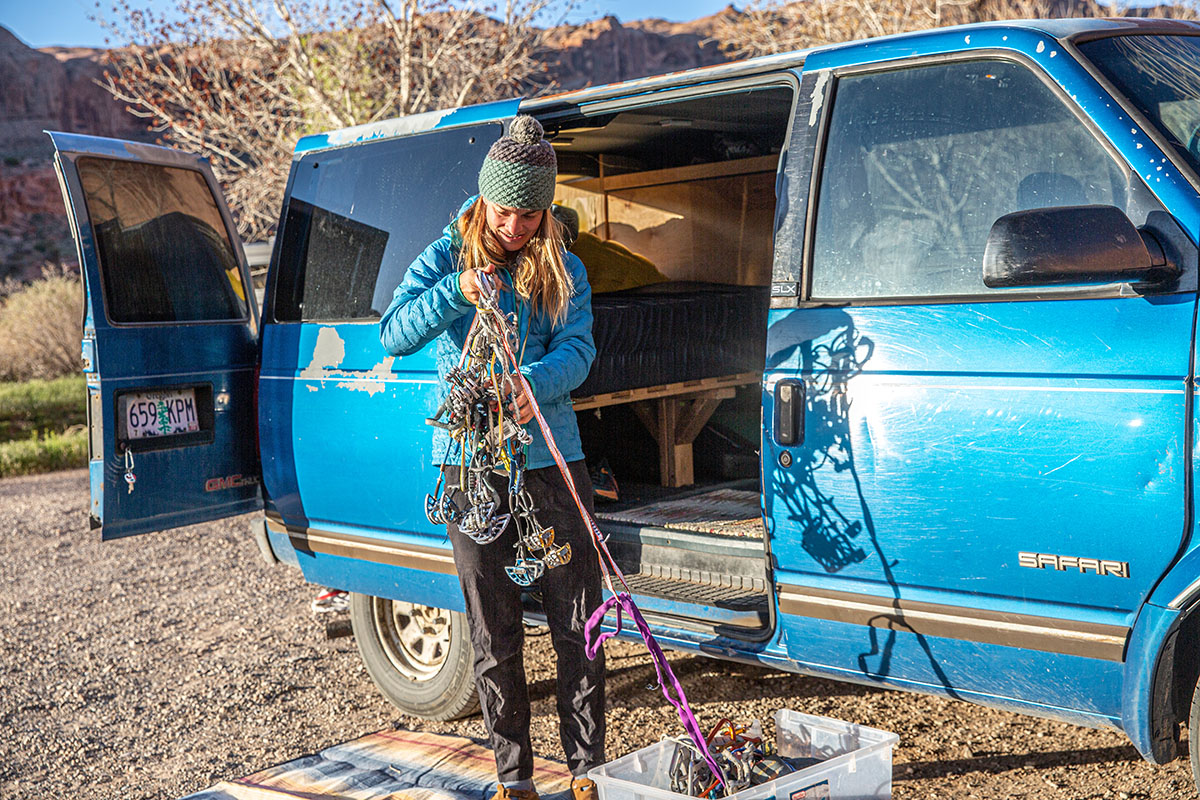
Climbing gear can be an intimidating world of numbers, safety ratings, and gear jargon. If you’re just getting started, talking to a real person is often invaluable, and there’s nowhere better to do that than your local climbing or gear shop. It’s also always a great idea to try things on—like shoes, harnesses, and backpacks—to make sure they fit properly and suit your needs. Perhaps our Seattle roots make us biased, but we also love REI Co-op. They have a wide selection of gear, offer a generous return policy (although it prohibits the return of certain types of climbing gear), and the staff are generally knowledgeable and helpful. If you prefer to shop from home, REI also offers free shipping with a $60 purchase from their website (members get free shipping regardless of the total). On the subject of online shopping, Backcountry.com provides free standard shipping on orders over $50 as well and offers a solid selection of climbing gear and a few can’t-miss annual sales. And finally, if you need your gear in a hurry or just want to lump it into another purchase, there’s always Amazon.com.
Back to Our Rock Climbing Checklist See Our Climbing Gear Reviews